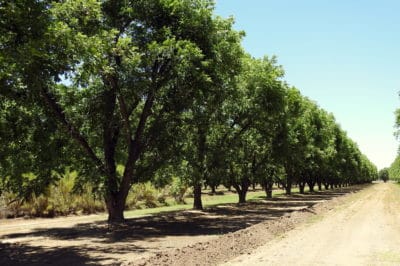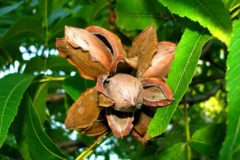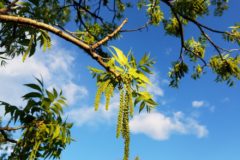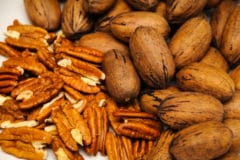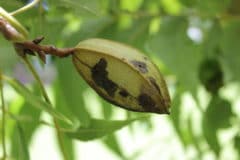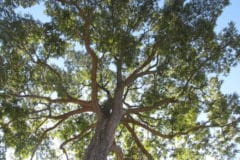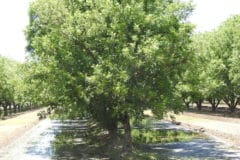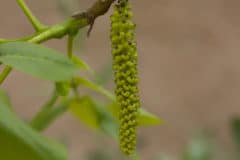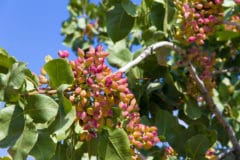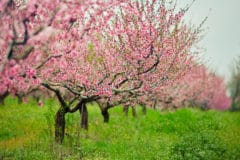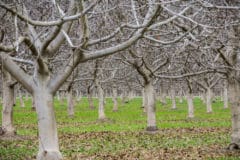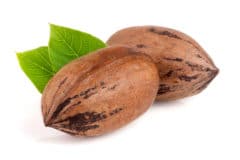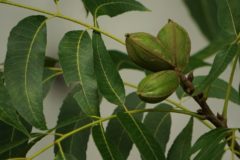Planting Pecan Trees
Pecan tree care begins at planting with choosing cultivars suited to your USDA plant hardiness zone. Most cultivars will produce nuts in USDA zones 6 through 9.
The Planting Site
Pecan trees need a site with:
- Organically rich, loose, well-draining soil
- Six or more hours of daily sun.
- Room for trees up to 100 feet tall, with 45- to 75-foot spreads.
When to Plant
Plant your trees so they’ll have enough time to establish new roots before their spring growth emerges. In the southern or southwestern United States, that’s between November and February. In the Midwest, it’s in March.
Ongoing Care
With proper care, pecan trees bear nuts within seven years.
Watering
For the first three years, water the trees every week it doesn’t rain. Slow, deep watering is best. Stop when water starts pooling on the surface.
Water older trees to keep the soil consistently moist during the growing season. To retain soil moisture, spread a 2– to 4-inch layer of organic mulch such as a shredded bark around the trees.
Fertilizing
If a soil test shows phosphorous and potassium levels greater than 35 and 125 parts per million respectively, fertilize with ½ pound (.27 kg) of ammonium nitrate for each year until age 5.
For lower levels, fertilize with 1 1/2 pounds (.68 kg) of balanced, 10-10-10 formula in the first year. Increase by the same amount each year, maxing out at 7.5 pounds (3.4 kg) in year five.
Apply half the fertilizer at bud break in spring and the remainder in midsummer, according to the label’s directions.
pH and Zinc
Feed pecan trees in soil with an acidic pH below 6.0 with 1/2 pound (.23 kg) of zinc sulfate for each year of age, up to 10.
If soil is alkaline (pH over 7.0), spray the leaves with a solution of 2 pounds (.91 kg) of zinc sulfate powder per 100 gallons (378 liters) of water. Spray three times between bud break and full leaf opening.
Managing Common Pests
Yellowish, pear-shaped aphids colonize and drain sap from new leaves and stems, drenching the trees in gooey, clear waste called honeydew. Honeydew attracts black, greasy sooty mold fungus.
For organic control, spray with insecticidal soap at the first sign of infestation. Saturate both sides of the leaves and repeat weekly until the problem subsides.
Pecan weevils attack in summer, climbing the trunks from their winter hiding places in the soil and depositing eggs in the developing nuts. Their larvae eat the nuts from the inside out. A heavy infestation can wipe out your harvest.
To discourage weevils, clear the soil of fallen nuts and debris. In early summer, wrap the trunks with heavy paper coated in petroleum jelly to trap the ascending weevils.
